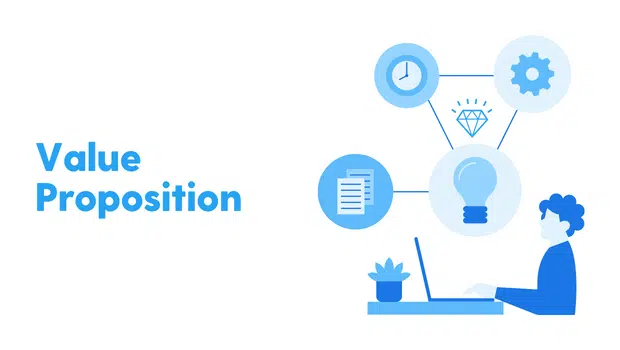What Is The Purpose Of A Cover Letter? Imagine you are a traveler embarking on a journey to an unfamiliar land. You pack your bags, study the customs and language of the locals, and prepare for any challenges ahead. But as you arrive at your destination, you realize that you forgot to bring one essential item: your map.
Just like a map guides travelers through uncharted territory, a cover letter serves as a guide for job seekers navigating the competitive job market.

It is an opportunity to introduce yourself, highlight your qualifications, and persuade potential employers to consider you for their open positions.
In this article, we will explore the purpose of a cover letter and provide tips on how to craft an effective one that will catch the attention of recruiters and hiring managers.
READ ALSO: What's Cover Letter For Resume?
- Definition and Importance of a Cover Letter
- The Purpose of a Cover Letter
- Understanding the Job Requirements
- Researching the Company
- Crafting Your Cover Letter
- Customizing Your Cover Letter
- Proofreading and Editing Your Cover Letter
- Follow Up After Submitting Your Cover Letter
- Frequently Asked Questions
- Conclusion
Definition and Importance of a Cover Letter
You can't afford to miss the chance to show your potential employer why you're the perfect fit for the job – that's where a well-crafted introduction comes in.
A cover letter is an essential tool in any job application process, as it offers a glimpse into who you are and what you can bring to the table. Cover letter etiquette dictates that every applicant should include one, even if it's not explicitly asked for in the job posting.
To make your cover letter stand out from the rest, there are a few best practices you should keep in mind.
- Firstly, address it to a specific person rather than using generic salutations like ‘To Whom It May Concern.' This demonstrates that you've done your research and shown initiative.
- Secondly, avoid simply regurgitating information from your resume – instead, use examples to showcase how your skills and experience make you an ideal candidate for the role.
By following these guidelines and crafting a compelling introduction, you're increasing your chances of making it past the initial screening process.
But what exactly is the purpose of a cover letter beyond just getting noticed? In the next section, we'll explore why this document is so important and what employers are looking for when they review them.
The Purpose of a Cover Letter
It's all about showing off your personality and skills to the hiring manager, making them excited to learn more about you. A cover letter is not just another piece of paper in your job application; it is an opportunity to make a strong first impression.
To help you understand the purpose of a cover letter, here are three key points:
- Introduce yourself: Your cover letter should provide a brief introduction that tells the employer who you are and why you're interested in their company. Use this space to showcase your personality and explain why you think you'd be a good fit for the position.
- Highlight your qualifications: The main goal of a cover letter is to convince the employer that you have what it takes to succeed in the role. Use specific examples from your past experiences that demonstrate how your skills and accomplishments align with what they're looking for.
- Demonstrate enthusiasm: Finally, use your cover letter as an opportunity to express genuine excitement about the position and company. Employers want to hire someone who's passionate about their work, so don't be afraid to let your enthusiasm shine through.
By understanding these key points, you can avoid common mistakes in your cover letters such as generic language or simply restating what's already on your resume.
Next up, we'll discuss how understanding job requirements can help tailor your application even further toward success.
READ ALSO: Top Cover Letter Job Application Samples
Understanding the Job Requirements
Unlock the secrets to tailoring your job application towards success by understanding the job requirements and employer expectations. Before you even start writing your cover letter, take some time to analyze the job posting and familiarize yourself with what the company is really looking for. This will help you craft a compelling cover letter that speaks directly to their needs.
To get started, create a table with three columns: “Job Requirements,” “Your Skills/Experience,” and “How You Can Contribute.” In each row, list out a specific requirement from the job posting, how your skills or experience align with that requirement, and then explain how you can contribute to the company based on that alignment.
This exercise will help you identify key points to highlight in your cover letter and give you a clear direction for tailoring it towards the specific job.
When analyzing the job requirements, pay attention not just to what they are asking for but also how they are asking for it. For example, if they mention wanting someone who is “detail-oriented,” think about why this might be important to them and how you can demonstrate that quality in your cover letter.
By showing that you understand their needs and have thoughtfully considered how you can meet them, you will stand out as a strong candidate from the very beginning of the hiring process.
With an understanding of what the employer is looking for in mind, move on to researching more about their company culture and mission statement. By doing so, it helps show employers that not only do meet their requirements but are also interested in being part of something bigger than just having any old job.
Researching the Company
Now that you know what the job requires, take a moment to research the company and discover how your skills can contribute to their mission. This is an essential step in writing a cover letter that stands out from the crowd.
To research effectively, start by visiting the company's website and social media pages. Look for key information such as their values, goals, and recent accomplishments. You can also search for news articles or press releases about the company to gain more insight into its operations.
Take note of any challenges they may be facing or areas where they are looking to expand. By understanding these details, you can tailor your cover letter to show how you can help address those needs.
Another way to research effectively is by reaching out to current or former employees of the company. LinkedIn is a great resource for finding people who work at your desired company and asking them questions about their experiences there.
This can give you a better understanding of what it's like working for that organization and what qualities they value in their employees.
By taking the time to research the company thoroughly, you'll be better equipped to craft a cover letter that shows how your skills align with their needs and values.
The next step is learning how to highlight those skills in an engaging way in order to capture the hiring manager's attention – this will be covered in our discussion on crafting your cover letter section below.
READ ALSO: Top 20 Job Interview Questions You Should Expect
Crafting Your Cover Letter
When crafting your cover letter, pay attention to the structure and format. Keep it concise and professional, with a clear introduction, body, and conclusion.
Be sure to include relevant information about yourself and how you fit the job requirements. Knowing what to include in your cover letter can make all the difference in landing an interview.
Highlight your qualifications that match the job description, showcase your enthusiasm for the role, and provide specific examples of past experiences that demonstrate your skills.
Finally, be aware of some dos and don'ts when writing your cover letter. Do research on the company beforehand, personalize each letter for each job application, and proofread carefully for errors or typos.
Don't use generic language or cliches, repeat everything from your resume verbatim, or forget to follow up after submitting.
Structure and Format
You'll easily understand how to structure and format your message by reviewing this section.
When it comes to structuring your cover letter, it's important to follow a basic format that includes an introduction, body paragraphs, and a conclusion.
Your introduction should include an effective opening that captures the reader's attention and clearly states your purpose for writing. Avoid common mistakes such as starting with generic statements like “I'm writing to apply for the position” or “I saw your job posting online.” Instead, consider using a creative hook that relates to the company or industry you're applying for.
In the body paragraphs of your cover letter, you should expand on why you're interested in the position and what skills or experiences make you a qualified candidate. Use specific examples from your resume or work history to demonstrate how you would be an asset to the company.
Finally, conclude with a strong closing statement that reiterates your interest in the position and thanks the employer for considering your application.
By following these guidelines for structuring and formatting your cover letter, you can ensure that it effectively communicates why you're the best fit for the job.
Transitioning into what to include in your cover letter next…
What to Include
Make sure to include relevant information in your application that highlights why you're the best candidate for the position. Your cover letter should be personalized and tailored to the specific job you're applying for.
Here are a few things you should consider including:
- Start with a strong opening statement that captures the reader's attention and explains why you're interested in the job.
- Highlight your skills and experience, emphasizing those that directly relate to the job requirements.
- Provide specific examples of how you've used these skills and achieved results in previous roles.
- End with a call-to-action, expressing your enthusiasm for the opportunity to discuss your qualifications further.
By avoiding common mistakes such as generic language or simply summarizing your resume, incorporating these elements into your cover letter can help showcase why you're uniquely qualified for the position.
In addition, incorporating keywords from the job posting can also help catch potential employer's attention.
Moving forward, it's important to understand some dos and don'ts when crafting your cover letter.
Dos and Don'ts
Let's explore some dos and don'ts when crafting your cover letter to ensure you stand out from other applicants.
Common mistakes include copying and pasting generic cover letters, using cliché phrases, or failing to address the hiring manager by name. To avoid these pitfalls, start by researching the company and position you're applying for. Use this information to tailor your cover letter to the specific job description and demonstrate how your skills align with their needs.
Next, use a professional tone throughout your letter, and avoid slang or informal language. Keep it concise – one page is usually sufficient – and proofread carefully for any errors in spelling or grammar.
Finally, remember that a cover letter should complement your resume rather than duplicate it. Use this opportunity to highlight aspects of your experience that may not be immediately apparent on your CV, such as extracurricular activities or relevant coursework.
By following these best practices, you can create a compelling cover letter that sets you apart from other candidates.
As important as it is to craft an effective general template for your cover letter, customizing each application will increase its impact substantially.
In the next section, we'll discuss how tailoring each individual cover letter can make all the difference in securing an interview with prospective employers.
READ ALSO: How To Write A Cover Letter For Internship
Customizing Your Cover Letter
It's easy to feel overwhelmed when it comes to personalizing your introduction, but taking the time to research and address the hiring manager by name can make a big difference in creating a strong first impression.
Personalizing salutations is an excellent way of demonstrating that you've done your homework and that you're genuinely interested in the position. It also shows that you've taken the initiative to go beyond what's required.
When customizing your cover letter, don't forget to highlight relevant experience. The purpose of a cover letter is to introduce yourself, explain why you're applying for the job, and demonstrate how your skills and experience match what the employer is looking for.
Therefore, it's essential to focus on particular achievements or qualifications that make you stand out from other candidates.
By personalizing your salutation and highlighting relevant experience in your cover letter, you'll increase your chances of getting noticed by potential employers.
Remember that this document serves as an opportunity for you to showcase who you are professionally and why they should consider hiring you.
Once those two aspects have been covered, it's time to move on to proofreading and editing your cover letter so that there are no errors or inconsistencies before submitting it with confidence!
Proofreading and Editing Your Cover Letter
You've put in the effort to personalize your introduction and highlight relevant experience, so now it's time to put on your editing glasses and ensure that every word counts.
Common mistakes include misspelled words, grammar errors, and incorrect punctuation. You don't want any of these errors to distract the reader from your qualifications.
To avoid these mistakes, proofread your cover letter carefully. Read it out loud or have someone else read it for you. This can help catch errors that you may have missed while reading silently.
Another tip is to take a break between writing and editing so that you can come back with fresh eyes.
When editing, focus on making each sentence concise and impactful. Remove any unnecessary words or phrases that do not add value to your message. Use active voice instead of passive voice to make your writing more engaging.
By taking the time to proofread and edit your cover letter, you'll showcase attention to detail and professionalism.
As important as crafting an effective cover letter is following up after submitting it.
Demonstrating initiative by reaching out can set you apart from other candidates who may not have taken this extra step in their job search process.
Follow Up After Submitting Your Cover Letter
After submitting your application, it's important to follow up with the potential employer to show your interest and initiative in the position. Here are some tips on how to effectively follow up after submitting your cover letter:
- Wait at least one week before following up. This gives the employer enough time to review all applications.
- Reach out via email or phone call, whichever you feel more comfortable with.
- Be polite and professional in your communication and express your continued interest in the position.
- If you don't hear back after a few attempts, don't be discouraged. Keep applying to other positions and continue improving your interview preparation skills to avoid common mistakes during the hiring process.
Following up can make a big difference in getting noticed by potential employers and landing an interview for the job you want. Don't hesitate to take this extra step as it shows that you're serious about the opportunity and willing to put forth effort towards achieving it.
Remember that persistence is key when it comes to job searching, so keep pushing forward even if things don't work out initially – success may just be around the corner!
READ ALSO: Job Interview Tips To Help You Ace Any Interview
Frequently Asked Questions
Should I include my salary expectations in my cover letter?
When it comes to salary negotiation, cover letter etiquette is crucial. Including your salary expectations in your cover letter can be a risky move as it may come off as presumptuous or put you at a disadvantage if the employer's budget is higher than what you had initially quoted.
Instead, focus on highlighting the skills and qualifications that make you the best fit for the job. If an employer asks for your salary expectations specifically, consider providing a range rather than a specific number to allow for negotiation.
Remember, your cover letter should be used to showcase why you're the ideal candidate for the position, not just to discuss compensation.
How long should my cover letter be?
Are you struggling to decide on the length of your cover letter? Well, let me tell you that this is a crucial aspect of crafting a winning application.
A poorly formatted or overly long cover letter can quickly turn off potential employers and leave them uninterested in reading further.
Therefore, it's essential to follow proper cover letter format and structure to ensure your message is clear and concise.
The ideal length for a cover letter is typically between 250-400 words, which equates to about half a page or one full page at most.
Remember, brevity is key when it comes to impressing recruiters and landing that dream job!
Can I use the same cover letter for multiple job applications?
Customization is key when it comes to cover letters. While it may be tempting to reuse the same letter for multiple job applications, this approach can actually do more harm than good.
Hiring managers can often spot a generic or recycled letter from a mile away and view it as a lack of effort and interest in the position. Instead, take the time to tailor your cover letter format to each specific job you apply for.
Highlight how your skills and experience align with the requirements listed in the job description, and show that you have done your research on the company and its values.
A well-crafted, customized cover letter can set you apart from other candidates and increase your chances of landing an interview.
Is it necessary to address the hiring manager by name in my cover letter?
To make a great first impression, it's important to use proper salutation in your cover letter by addressing the hiring manager by name.
While some job postings may not include the hiring manager's name, do some research to find out who will be reading your application.
Personalization techniques like this show that you've done your homework and are genuinely interested in the company and position. It also helps to establish a connection with the reader from the start.
So take the time to personalize your cover letter and address the hiring manager by name – it could make all the difference!
Should I mention any personal information in my cover letter, such as my age or marital status?
When it comes to mentioning personal information in your cover letter, it's crucial to consider its relevance and the appropriate language you use.
Avoid including details like your age or marital status unless they are directly related to the job you're applying for. Instead, focus on highlighting your relevant skills, experiences, and qualifications that make you a strong candidate.
Also, be mindful of using appropriate language that reflects professionalism and avoids any potential biases or discrimination based on personal characteristics.
Remember that your cover letter is meant to showcase your abilities as a professional, so keep it focused on what matters most – how you can contribute value to the company.
Conclusion
Now that you understand the importance of a cover letter and its purpose, it's time to put your knowledge into action.
Crafting an effective cover letter requires research, attention to detail, and customization. For example, let's say you're applying for a job at a marketing agency. After researching the company's website and social media channels, you discover they have a strong focus on content marketing.
In your cover letter, you can showcase your experience in creating successful content marketing campaigns and how you can contribute to their team.
Remember to proofread and edit your cover letter before submitting it. You want to make sure there are no grammatical errors or typos that could harm your chances of getting the job.
Finally, don't forget to follow up with the employer after submitting your application. This shows initiative and interest in the position.
By following these tips, you can create a standout cover letter that showcases why you're the best candidate for the job. Remember, even though it may take extra effort upfront, a well-crafted cover letter can make all the difference in getting noticed by potential employers and landing your dream job!
Thank you for reading our article today! Please remember to share this article on social media to help others benefit too. It also helps us improve our algorithm and relevance to the public. Thanks for Sharring!!! Follow us on Socials: Facebook - LinkedIn - Twitter
Discover more from iParrot Jobs
Subscribe to get the latest posts sent to your email.









